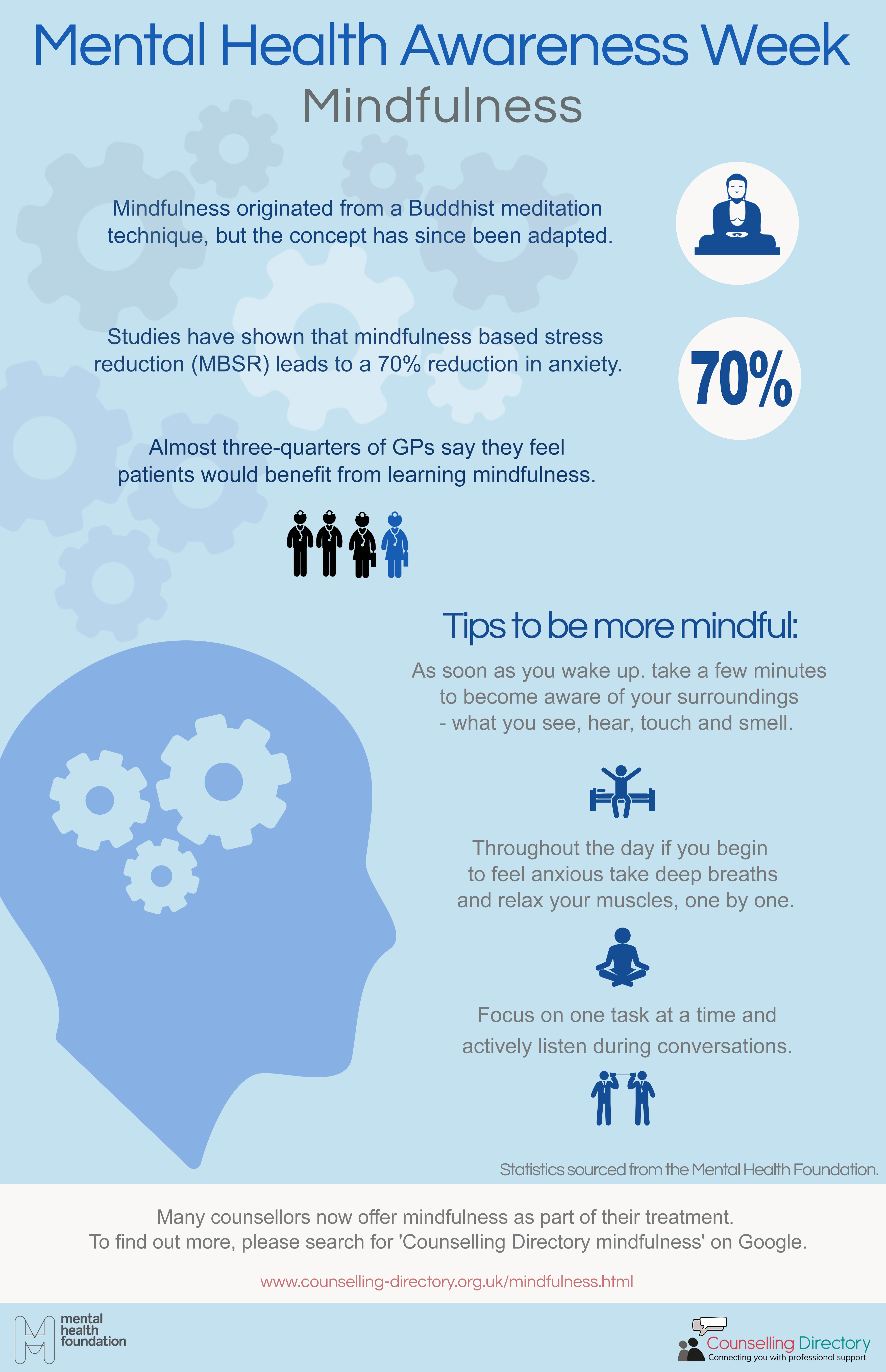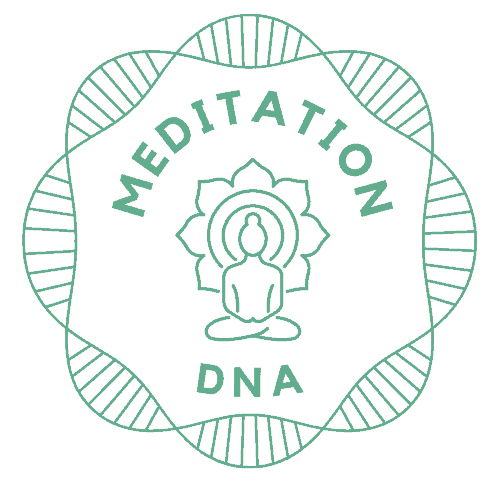Mental health conditions meditation and mindfulness practices are widely used. Meditative practices span over a vast spectrum – and so do their benefits – physical health benefits, emotional health benefits, and mental health benefits.
Click here to learn what meditation is and all the benefits it holds
Meditation is often used as a practice alongside mindfulness techniques to manage many health conditions including psychiatric disorders, sleep disorders, and physical health conditions. Many mindfulness meditation programs exist to aid in managing these conditions.
Here is a list of what meditation can be used for:
Benefits of Meditation for Mental Health – mental health conditions meditation
Disclaimer: Meditation and mental health are interlinked. It is important to note however that meditation does not aim to diagnose or act as an active treatment to any mental illness, it is rather used as a tool (mindfulness-based cognitive therapy) alongside other therapeutic practices/medication that can help us manage and move through our mental struggles to improve our overall quality of life.
1. Insomnia or Sleep Disorders
Insomnia is a common condition that occurs when you struggle to fall asleep, stay asleep or go back to sleep and therefore knocks your circadian or natural body clock out of balance.
Symptoms can include:
- Struggle to fall asleep
- Struggle to stay asleep (wake up frequently during the night)
- Wake up too early (not getting optimal of 8 hours of sleep)
- Not feeling rested
- Tired and sleepy during the day
- Feel irritated, depressed or anxious
- Low focus and concentration
- Prone to making error or accidents (more than usual)
- Worrying about sleep
Where Mindfulness Meets Circadian Health
Can meditation help for sleep?
It’s possible that meditating will help you sleep better. It can be used as a relaxation technique. When done before bed, meditation can help reduce insomnia and sleep troubles.
Meditating calms the mind and body and enhances the production of melatonin (the hormone that controls our circadian rhythm and makes us sleepy at night). Meditation can therefore aid in deep sleep when done before bed. Studies have also shown that simple mindfulness practice can be taught to your children to help kids sleep.
One study compared mindfulness-based meditation programs and found that people who meditated stayed asleep longer and had improved insomnia severity, compared with those who had an unmedicated control condition ( Becoming skilled in meditation may help you control or redirect the racing or runaway thoughts that often lead to insomnia.
healthline.com
Effects of mindfulness Meditation versus sleep?
It is important to note that meditation is done to boost your sleep especially when you are struggling to sleep or feel more stressed. Meditation is not done instead of sleeping.
Try this: Meditation for Insomnia
Short Meditation YouTube for sleep
2. Behavioral and Emotional Disorders – Attention Deficit/Hyperactivity Disorder (ADHD)
There are several common behavior disorders in children and adults, including oppositional defiant disorder and conduct disorder. Behavioral therapy, education, and medication can be used for these disorders.
Symptoms of ADHD and other behavioral disorders in adults:
- Lacks attention to detail
- Regularly starting projects without completing old ones
- Lack organizational skill
- Difficulty to prioritize and focus
- Scatter-brained – losing or misplacing things
- Forgetful
- Restless
- Speaks a lot and difficulty keeping quiet
- Interrupting others
- Easily irritated and quick-tempered
- Difficult cope with stress
- Extremely impatient
- Takes many risks and does not think about safety
Effects Of Meditation With ADHD:
Meditation is a tool to practice attention control as we learn to shift our awareness from breath to mind, to body. It trains our mind into a state of calmness and allows us to regulate our emotions (whether they be positive emotions or negative emotions) which teaches us to be less impulsive or reactive.
Meditation plays out in three basic steps. First, individuals focus their attention on an object or process (following the breath, for instance). This acts as an attention anchor. The second step involves noticing and acknowledging the presence of distractors – thoughts, sensations, emotions and the like – and learning to let go of them. The third step entails gently but firmly coming back to the anchor as often as necessary.
People with ADHD who repeat this simple mindfulness meditation exercise often find that it improves their focus. By remaining in the present moment and training in letting go of distractors, they realize that they have agency over how they react to these distractors. It has also been shown that mindfulness for ADHD significantly improves the span of concentration and focus. Participants who completed the aforementioned study reported extremely high satisfaction levels, giving the program an average score of 9/10.
Try this mindfulness technique to help ADHD:
10 Minute meditation to enhance focus and attention
3. Anxiety/Panic Disorder
There are many other conditions or even phobias that branch off from anxiety and panic disorder. For example, Agoraphobia and claustrophobia are two examples of specific phobias, which are included in the group of mental health disorders called anxiety disorders. People’s daily lives can be affected by anxiety disorders that are not treated.
Other anxiety conditions include:
- Agoraphobia
- Generalized anxiety disorder
- Panic disorder
- Selective mutism in children
- Separation anxiety disorder
- Social anxiety disorder (social phobia)
- Specific phobias
- Substance-induced anxiety disorder
- Other specified anxiety disorder and unspecified anxiety disorder
Symptoms of Anxiety include:
Common anxiety symptoms
- Tension, restlessness, nervousness
- A constant sense of panic, irrational fear or doom
- increase in heart rate
- Increase in breathing (hyperventilating)
- Sweating or other body sensations
- Shaking or trembling or other physical sensations of nervousness
- Tiredness and weakness
- Low concentration
- Struggle to focus on anything else other than present or future worry (can’t seem to control the worry and the worry is out of proportion to the nature of the event)
- Insomnia
- Gastrointestinal and digestive issues (Irritable Bowel Syndrome)
- Avoiding anxiety triggers
How Mindfulness-Based Cognitive Therapy Helps with Anxiety
Meditation effects on anxiety
Meditation helps to reduce feelings of anxiety or fear as it reinforces positive thinking and calms the nervous system down that controls our fight or flight mode (sympathetic nervous system) by activating our parasympathetic nervous system or rest and digest response by controlling our breathing.
These changes in the nervous system help to manage the symptoms of anxiety as it diffuses the worry and fears you might be experiencing by drawing your attention to your breath and allowing you to let go of these intrusive thoughts.
How Meditation Can Help Generalized Anxiety Disorder
Meditation allows you to reorganize thoughts and see them for what they truly are, rather than what you have built them up to be, which makes them less overwhelming.
It also draws you to the present moment and therefore takes the focus and attention away from thinking into the past or the future which is often where these anxious thoughts stem from. Meditation reduces the stress response in the body overall.
Try this short meditation for anxiety:
Breathing exercises
Box breathe – Find a quiet space and sit in a comfortable seat. Close your eyes and seal off your lips. Inhale for the count of 4 through your nose. Hold for a count of 4. Exhale for a count of 8. Hold for a count of 4 at the bottom. Repeat 5 * 10 times. With every inhale imagine your breath filling your lungs and with every exhale imagine all the air pouring out, imagine the thoughts that might be worrying you to simply pass through your mind with a gentle breeze blowing them past – let go.
Or click on this link for a 10 minute guided meditation
4. Eating Disorder/Body Dysmorphia
An eating disorder is marked by a preoccupation with body weight and irregular eating habits. Eating disorders affect both males and females. It can be fatal and have serious health issues. There are many different classifications of eating disorders such as bulimia, Anorexia Nervosa, Binge Eating Disorder, Orthorexia, to name a few.
Body dysmorphic disorder is a mental disorder characterized by the obsessive idea that some aspect of one’s own appearance is severely flawed and therefore warrants exceptional measures to hide it.
Every eating disorder has its own signs and symptoms, both mental and physical but it is important to know that an eating disorder is a mental illness and the physical symptoms might just be the causation of the emotional and mental turmoil that manifests.
Some common signs and Symptoms:
- Clear behaviors of controlling food (either type or intake) and restrictive patterns (compulsive and obsessive dieting)
- Preoccupation with weight, food, calories, carbohydrates, fat grams, dieting and physical activity/exercise
- Restricting entire categories of foods
- Prefers eating alone
- Food rituals (excessive chewing, doesn’t allow foods to touch)
- Eating irregularly (skip meals) and portion control
- Fad dieting
- Isolates from social events or interactions (can result in social anxiety disorder)
- Body dysmorphia (body checking)
- Extreme irritation, anger and mood swings
- Irregular sleep (insomnia)
- Dry and thin skin, hair and brittle nails as well as weak gums and teeth
- Struggle to regulate temperature (often cold)
- Malnourished which could result in anemia or thyroid imbalance (lacking essential minerals and vitamins)
- Muscle weakness and dizziness
- Extreme fatigue
- Hormonal imbalances (irregular periods in females)
- Digestive issues (bloating, constipation, diarrhea, Irritable Bowel Syndrome)
- Overuse in specific supplements
- Thinking about food all the time and planning meals
- Feeling out of control with ‘diet slip ups’
- Depressed, anxious and self-sabotages
Meditation programs alongside Eating Disorder Recovery:
Meditation cultivates compassion and teaches us how to treat ourselves with patience and kindness as it is a true practice of self-love. We can learn to view life as a neutral and objective path and release the judgments and harmful thoughts we might have about ourselves.
We learn to accept ourselves as we are in this moment and let go of control, self-criticism, and anxiety. Again, this is a constant process and it does not miraculously happen after a single mediation session.
We learn about ourselves and practice appreciation and gratitude towards ourselves and the uniqueness of our bodies and by tuning into our minds we come to learn that we are so much more than our physical bodies and we are truly capable of anything. Meditation, therefore, empowers us, instills trust in us, and builds our confidence as individual beings.
Another way meditation helps us is by helping us cope with triggers. The practice guides you to releasing attachment and meaning to whatever thoughts, feelings, or emotions might be coming up and draws your focus to a singular intention or your breath.
This dissolves the stressful and anxious thoughts you might be feeling, and although not an easy or comfortable task, can aim to distance yourself from the negative thoughts or self-punishing behavior.
Try this meditation if you need guidance or to help you cope:
15-minute Meditation to practice gentle self-love
5. Obsessive Compulsive Disorder (OCD)
Obsessive-Compulsive Disorder is a mental disorder that causes people to have unwanted thoughts and feelings, called obsessions. People with this condition also experience urges or compulsions they feel must be performed to reduce the anxiety caused by their obsessive thoughts. The most common type of obsession involves having recurring fears about contamination, such as fear of germs or dirt.
Symptoms of OCD:
- Repeated thoughts, images or urges that are distressing and cause anxiety.
- Feels the need to be in constant control over situations
- The person may try to ignore the thought but it keeps coming back again and again until they can’t stand it any longer.
- They feel a need to perform an action in order to get rid of these unwanted thoughts. This is known as compulsions.
- These actions usually have no benefit for the individual except temporarily relieving their distress.
- Compulsions become more frequent over time and eventually
How meditation reduces OCD:
* It helps you to focus on the present moment.
* You can learn how to control your thoughts and emotions, which is a big part of overcoming OCD.
* Meditation gives you time for yourself so that you don’t have to spend all day thinking about what other people think or say about you.
* When you meditate regularly, it becomes easier to let go of negative feelings like anger and resentment.
Try this: Meditation for OCD
10 Minute Thought Diffusion Meditation To Ease A Frantic Mind

6. Depression
Major Depression or Recurrent Depression is a condition characterized by loss of interest and enjoyment, as well as lowering of mood. It is much more than just being sad. Depression has different symptoms and types. There are different levels of symptoms and severity. The risk of suicidal thoughts can be increased by the symptoms of depression.
Depressive Symptoms include:
- Sense of sadness, hopelessness, emptiness
- Symptoms are recurrent (recurrent depression)
- Anger, frustration, irritation at minor things
- Lack of interest and pleasure in most activities
- Lack of sleep or too much sleep
- Low energy and increase in tiredness (takes a lot of effort to do minor things)
- Increase/decrease in appetite which results in increase/decrease in weight
- Anxiety, agitation and restlessness
- Slow in mental and physical activities
- Increase in feelings of guilt, unworthiness, self-blame
- Ruminating over past failures
- Low memory, concentration and focus
- Suicidal thoughts (major depression)
- Physical pain that can’t be explained (muscular tension)
Meditation for depression – to reduce depressive symptoms:
It helps you to change your thought patterns and the way you respond to negative thoughts. There is strong evidence that suggests that meditation increases your neuroplasticity (the ability for your brain to create new neural connections and pathways which result in different ways of thinking or thought patterns).
It does not necessarily replace the negative thought with a positive one (if only it was that easy) but it allows us to notice the negative thought, accept it as one possibility but also know that it is not the only possibility.
This way it trains our brain to manage thoughts – similar to that of anxiety. We are therefore not getting rid of the negative thought (this feeds into the idea of toxic positivity – “just be happy!”) but we are seeing the thought from an outside perspective rather than experiencing it.
According to 2016 researchTrusted Source, mindfulness-based cognitive therapy, an approach to psychotherapy that incorporates mindfulness meditation practices, can help lower your chances of depression relapse.
https://www.healthline.com/health/meditation-for-depression#benefits
Try this to help manage depression- Meditation for Anxiety and Depression?:
10-minute mindfulness meditation – You Are Not Alone
7. Paranoia
This is the irrational and continuous feeling or underlying fear that people are ‘out to get you’. Paranoia can be a symptom of conditions like paranoid personality disorder and delusional disorder.
Symptoms of paranoia:
- Acting or feeling defensive, hostile, and/or aggressive
- Taking offense easily
- Struggle to relax or accept when you are not right
- Struggle to accept criticism
- Trust issues
- Reading false underlying meanings into people’s normal actions and behaviors
Benefits of Mindfulness when dealing with Paranoia:
Paranoia is similar to anxiety as it can often result in panic attacks. It is fundamentally the brain overthinking and thinking of scenarios that aren’t necessarily true. Along with medications and psychotherapy practices, meditation can be a great help in managing paranoia.
Since meditation draws us into the present moment it can also lead us to question and restructure our thoughts, without judgment.
We start to become curious as to why these thoughts might be coming up and get down to the root cause of it.
We start to unravel our minds and deal with underlying traumas that might be causing paranoia.
We also start to learn more about ourselves and how our brain operates as well as how to regulate our thoughts, feelings, and emotions in specific scenarios to be less reactive which is often the case when it comes to paranoia.
When we get down to the bottom of these types of recurrences (which is a practice and a constant journey) we can start to see red flags of intrusive or paranoid thoughts and know how to manage them or even prevent them from getting worse.
Try this Meditation for paranoia:
5-minute Meditation to ease anxiety or a busy mind
8. Post Traumatic Stress Disorder (PTSD) / Trauma
People who have experienced traumatic events can develop post-traumatic stress disorder. This can be a car accident, sexual assault, war-related events, or natural disaster.
Mindfulness is an adjunct to, not a replacement for, treatment. Sometimes, when people have difficult or extensive histories of trauma or abuse, meditation practice may put them in touch with those memories and emotions, which can sometimes feel overwhelming, particularly at first. For this reason, if you have a history like this it’s wise to be working with a therapist while exploring the practice of mindfulness. mindful.org
Symptoms of PTSD:
- Intrusive memories of event (usually caused by triggers)
- Avoidance of people, places or things that might be a trigger of intrusive memories
- Negative thinking and mood, hopelessness, feeling numb and alone/detached from those around you
- Changes in physical and emotional reactions – easily frightened, insomnia, emotional outbursts, overwhelm, guilt, shame, destructive behavior (to self and others)
Trial of mindfulness meditation – How Meditation can Help:
Meditation calms down stress-related conditions and helps us to cope with stress as it boosts our ability to tap into our rest and digest nervous system (by deactivating the flight and flight response which is heightened when under stress) through breathing techniques.
Meditation also increases your sense of purpose which gives a clearer understanding of yourself and how you individually process things and helps us move through trauma.
Meditating could make it easier to talk to others and open up about our trauma – often not speaking about trauma feeds the grip it has on us.
It teaches us to be more compassionate towards ourselves and others and treat our bodies and minds with kindness, which can release a lot of the guilt and shame that might be felt surrounding the traumatic event.
When we meditate it teaches us not to deny or resist uncomfortable or maybe even frightening thoughts but to instead move through them and allow them to pass – this is where healing starts. We face our fears head-on.
Meditation can however also have adverse effects as it brings the trauma to the surface which can be triggering for many.
Try this Meditation for PTSD:
10-minute gentle Meditation for emotional healing
9. Dissociation and dissociative disorders
When a person disengages from their thoughts, feelings, memories, and sense of identity in a mental process called dissociation. Dissociative disorders include amnesia and depersonalization.
Signs depend on the form of dissociative disorders you may have
Common symptoms may include:
- Loss of memory (amnesia) for specific time periods
- A feeling of being numb and detached to your emotions
- Distorted perceptions of people and circumstances around you
- A lack of self-identity
- Experiencing stress which effects your work and relationship (struggle to cope with stress)
- Onset of other mental health problems (anxiety, depression etc.)
How meditation might help:
Your life purpose and meaning becomes more clear which allows you to rebuild your identity.
A meditation practice, when done regularly, allows us to constantly learn more about ourselves and unlearn parts of ourselves we wish to change. It empowers us to know that we always have a choice in everything and that relates to how we think too.
We get to choose who we want to be and how we want to live and through meditation, we discover this by channeling our introspective state and questioning the nature of our thoughts and actions.
It allows us to become more in tune with the essence of ourselves, our feelings, and our emotions rather than numb them out. It, therefore, allows us to fully feel these emotions, even when they are uncomfortable and don’t necessarily make us feel good, but an important to practice letting go of pent-up feelings.
As you meditate more and more, you find it much easier to figure out the things you like and the things you do not like. As a result, you discover your passions and gain clarity about what you want from life. All this sums up to living a life that has a purpose and feels meaningful.
Try this Type of Meditation for Dissociation:
10-minute meditation for yourself
10. Dementia (including Alzheimer’s disease)
Dementia affects a person’s daily life and activities because of the loss of cognitive functioning.
Symptoms include:
- Memory loss, loss of judgment, and confusion
- Struggles to express self, speak, write, read
- Wandering and getting lost in familiar places
- Has trouble with responsibility such as finances and paying bills
- Repeating questions or stories
- Use of unusual words to explain something simple
- Slow in completing daily activities and losing interest during these tasks
- Delusional, paranoid, hallucinates
- Impulsive actions
- Not sensitive to other people and their feelings
- Poor balance and movement
How Meditation can Help for Dementia:
During meditation or mindfulness practices your prefrontal cortex (the part of the brain responsible for many cognitive actions such as, social interactions, decision making, problem-solving and, expression) gets stimulated which results in boosting your brain’s ability to focus. This also enhances your learning capacity and capabilities which further improves aids and improves memory.
Meditation relaxes the mind and reduces the effects of information overload, which is one of the most common causes of poor decision making and brain fog.
Meditation And Dementia: What You Need To Know
Try this guided mindfulness meditation training:
10 Minute Meditation for Clarity and Stability
The consensus is that meditation may promote the diminishment of psychiatric illness, character change, and the resolution of neurosis when used adjunctively with psychodynamically oriented and cognitive behavioral psychotherapy.
Click for a step-by-step guide on how to meditate
In conclusion, there is evidence supporting the use of meditation as a complementary treatment modality for various mental health conditions.
You are not alone. If you are struggling with a mental illness or mental condition please visit https://www.mentalhelp.net/mental-health/hotline/ for help and support.



